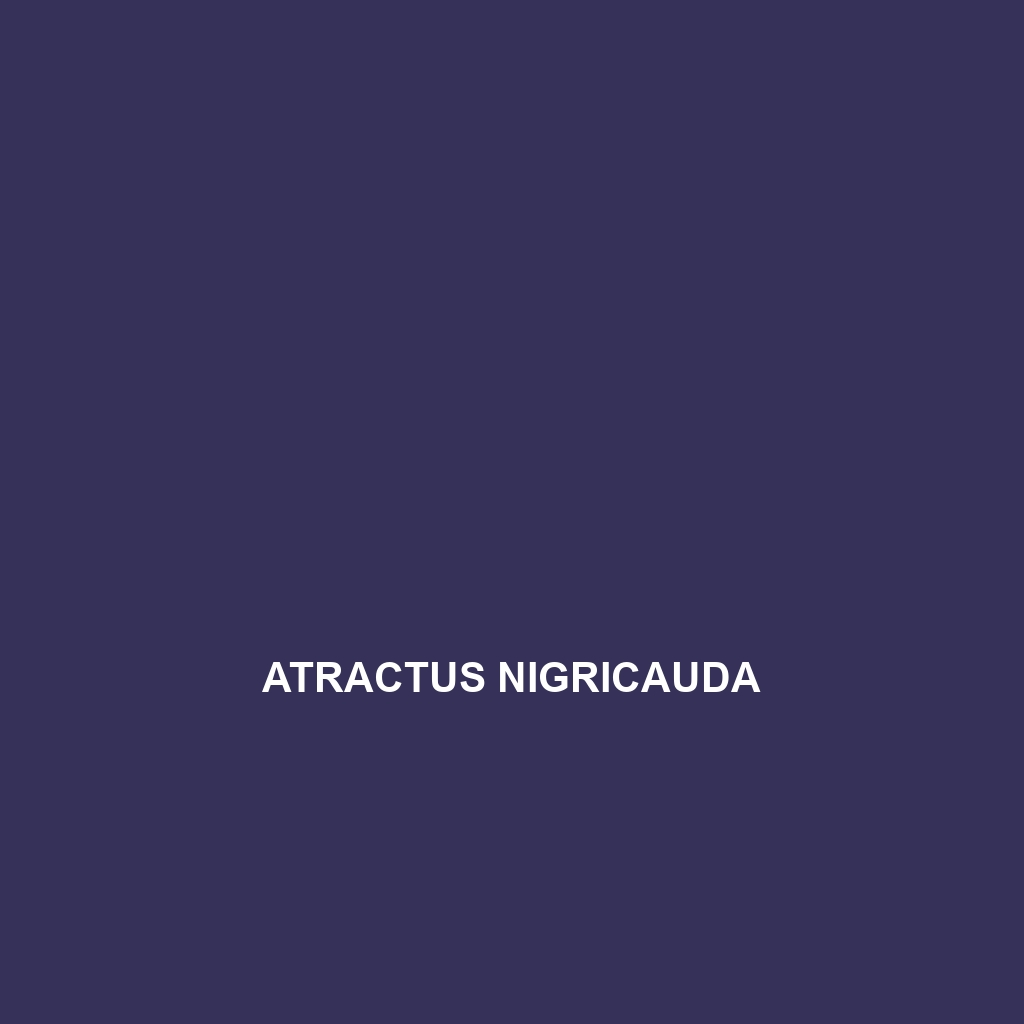Atractus nicefori
Common Name: Atractus nicefori
Scientific Name: Atractus nicefori
Habitat
Atractus nicefori is primarily found in the dense forests of Colombia, specifically in the Chocó region. This species thrives in humid environments, often residing in lowland rainforests and adjacent cloud forests. The preferred habitat features a rich tapestry of tropical vegetation, where leaf litter and moist soils can be frequently observed.
Physical Characteristics
Typically, Atractus nicefori reaches lengths of up to 60 cm (approximately 24 inches). Its coloration is characterized by a striking pattern of dark brown to black with lighter speckles, providing excellent camouflage in its natural habitat. The body is elongated and slender, a distinctive feature that facilitates its burrowing and foraging activities. The head is slightly wider than the neck, aiding in its identification.
Behavior
Atractus nicefori exhibits largely fossorial behavior, spending much of its life underground. This snake is primarily nocturnal, emerging at night to forage for food. During the day, it can often be found hiding under leaf litter or logs. Its shy and reclusive nature makes sightings rare, adding to the intrigue and allure of this species among herpetologists.
Diet
The diet of Atractus nicefori mainly consists of small invertebrates, particularly earthworms and slugs. It uses its keen sense of smell to locate prey hidden in the moist soil. This dietary preference positions it as an important predator of its ecosystem, regulating populations of smaller soil-dwelling organisms.
Reproduction
Atractus nicefori is ovoviviparous, meaning that the females give birth to live young rather than laying eggs. The breeding season typically occurs during the rainy months, with females giving birth to litters of up to 10 offspring. The young are fully formed and independent at birth, displaying the characteristic coloration of the species.
Conservation Status
Currently, Atractus nicefori is considered vulnerable due to habitat loss driven by deforestation and agricultural expansion. Its restricted range in Colombia makes it particularly susceptible to environmental changes, highlighting the need for conservation efforts to protect its natural habitat.
Interesting Facts
One notable fact about Atractus nicefori is its unique ability to detect vibrations through the ground, which aids in hunting and evading predators. This adaptation is a fascinating survival mechanism that sets it apart from many other snake species.
Role in Ecosystem
Atractus nicefori plays a crucial role in its ecosystem as a pest control agent, helping to regulate the populations of invertebrates in the soil. Its interactions with other species, including its prey and potential predators, contribute to the complex food web within its habitat, underscoring its ecological significance.
